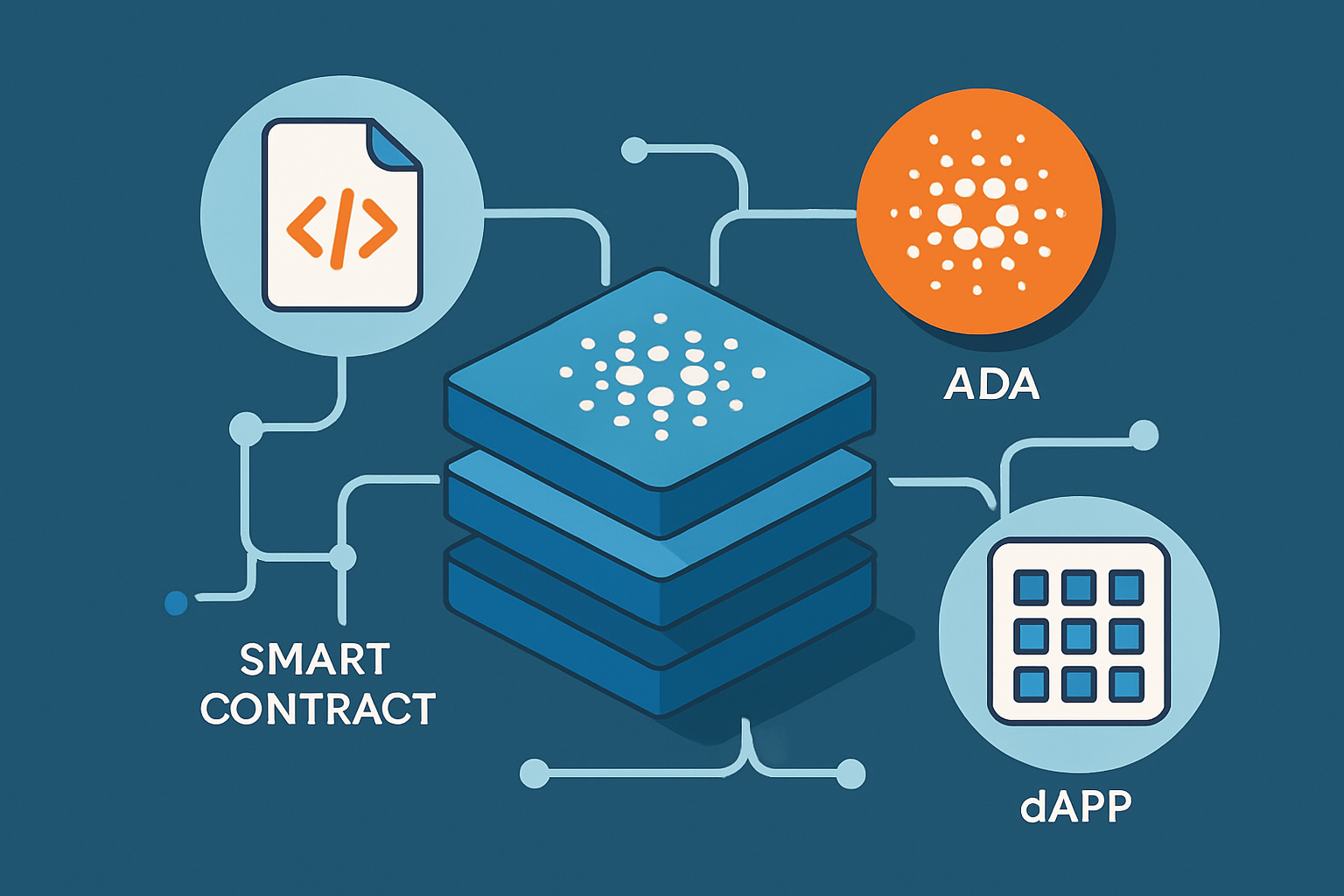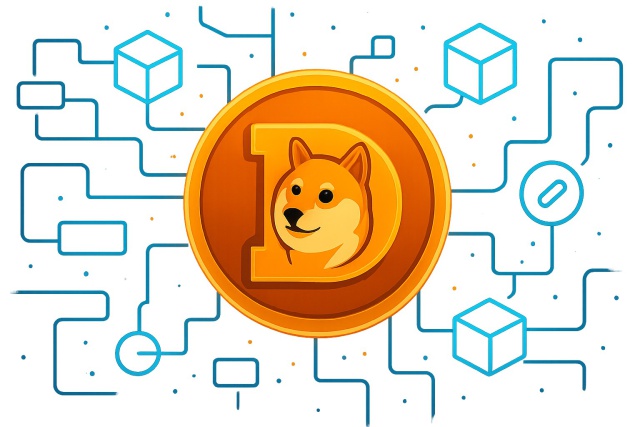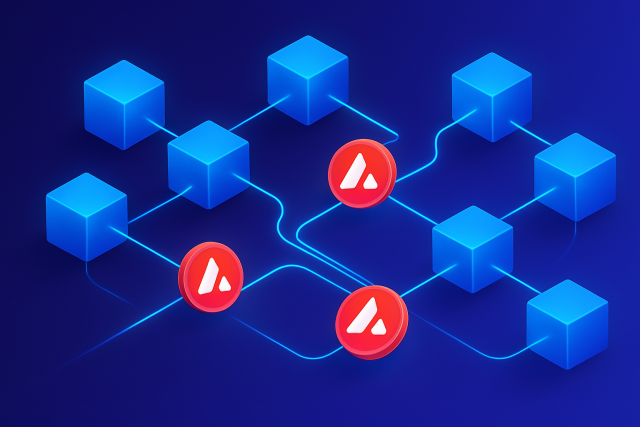What Is Cardano and How Does It Work?


Cardano often manages to steal the spotlight among altcoins in the blockchain world, thanks to its unique scientific approach and solid focus on sustainability.
So, what exactly is Cardano anyway?
Cardano is a blockchain platform and cryptocurrency designed to offer a secure and scalable playground for building decentralized applications. Launched by Charles Hoskinson back in 2017, it aims to tackle some of the hurdles that earlier platforms like Bitcoin and Ethereum have struggled with.
- Launched back in 2017 with a clear focus on sustainability and scalability built to last
- Founded by Charles Hoskinson who you might know from co-founding Ethereum
- Built on a philosophy that marries rigorous academic research with practical engineering
- Crafted specifically to reduce blockchain energy consumption and shrink its environmental footprint because every bit helps
- Developed through peer-reviewed research and formal methods to ensure it is rock-solid and reliable without cutting corners
The Key Features and Vision Behind Cardano
Let's dive into what really makes Cardano tick and why it has captured so much attention. This is not just another blockchain project; it is a carefully crafted blend of innovative tech and a grand vision aiming to shake up the crypto world in a meaningful way.
Cardano sets out to create a next-generation blockchain ecosystem that is arguably more sustainable and scalable than today's networks. It focuses on backing secure and efficient decentralized apps and smart contracts.
- Ready to scale up and tackle a hefty volume of transactions while focusing on future growth opportunities
- Thoughtfully designed for sustainability using energy-efficient consensus methods and smart governance to help the planet
- Crafted to work well with various blockchains through seamless interoperability with no compatibility headaches
- Packed with robust security measures to keep user assets locked down tight and ensure data stays solid
- Built with decentralization at its core, spreading control to avoid single points of failure
- Firmly committed to scientific rigor to ensure every upgrade is backed by solid research and peer review
Cardano Works A Quick Overview Simplified
Cardano rolls with a clever dual-layer blockchain design, neatly separating transaction processing from smart contract execution. Its consensus system is built to deliver security and efficiency without hogging all your computational horsepower
Getting to Grips with the Two-Layer Design CSL and CCL
Cardano's blockchain is split into two main layers: the Cardano Settlement Layer (CSL) and the Cardano Computation Layer (CCL). The CSL is responsible for handling ADA cryptocurrency transactions and acts like a trusty ledger you can count on. The CCL takes charge of smart contracts and decentralized applications, keeping things separate to boost both flexibility and security.
Wrangling the Ouroboros Proof-of-Stake Consensus
Ouroboros is Cardano's signature proof-of-stake consensus protocol that plays a key role in keeping the network secure by selecting validators called slot leaders based on how much stake they have locked in. It’s a much greener approach compared to proof-of-work systems, sipping energy rather than guzzling it.
Time is broken up into epochs each running for a few days—just enough to keep things moving without dragging on.
Each epoch gets sliced into slots which are short bursts when blocks can be created, like mini windows of opportunity.
Slot leaders are picked based on their stake size to add blocks during their assigned slot giving them a chance to shine on the network stage.
Validators are the hardworking people who produce blocks and record transactions and act as the network’s watchdogs to keep everything secure.
Rewards go to those who stake ADA and get involved in governance which keeps them invested and helps nudge the network forward smoothly.
Getting to Know ADA The Native Cryptocurrency of Cardano
ADA is Cardano's homegrown digital currency and the lifeblood that keeps the whole network ticking. It powers transactions, helps lock things down securely through staking, plays a role in decentralized governance and even acts as collateral when running smart contracts.
- Takes care of transaction fees on the Cardano network so you don’t have to worry about them
- Can be staked by users to earn rewards and help keep the blockchain safe
- Gives you voting power in Cardano’s governance system so your say counts
- Acts as collateral for some smart contracts and helps keep everything secure and running smoothly
The Development Philosophy and Governance of Cardano
When it comes to Cardano, the approach is anything but run-of-the-mill. Their development philosophy is rooted in a meticulous, evidence-based process that feels more like a well-rehearsed symphony than a hurried hackathon. Behind the scenes, a team of world-class academics and engineers collaborate to ensure every piece fits perfectly. Governance here isn’t just a buzzword; it’s a carefully crafted system aiming to balance innovation with a steady hand—because, let’s face it, no one likes a wild rollercoaster when it comes to their blockchain.
In my experience, Cardano’s layered architecture is a breath of fresh air, separating the settlement layer from the computation layer to boost security and scalability. But the real magic lies in their commitment to peer-reviewed research. It’s like they took a page out of the academic playbook, making sure that everything from consensus algorithms to smart contracts is scrutinized to the nth degree before going live. And governance? It’s a living, breathing entity here, gradually evolving through stakeholder input—proof they’re serious about playing the long game.
All in all, Cardano isn’t just building a blockchain; they’re crafting an ecosystem with the patience and precision of a master watchmaker, ticking away towards a future where decentralization doesn’t come at the cost of reliability.
Cardano really stands out by rooting itself in peer-reviewed academic research and leaning on formal verification methods to back its codebase. Its governance system puts the community right at the heart of things, letting ADA holders pitch ideas and cast votes on protocol upgrades.
- We team up closely with universities and research institutions to ensure our analysis is thorough and rigorous
- Most development unfolds in Haskell, a programming language known for its rock-solid reliability
- Project Catalyst opens its doors to the community to pitch funding proposals and cast votes
- Our treasury system manages funds to support ongoing and future development sustainably
- Voting processes give ADA holders a real seat at the table and let them actively steer network decisions
Exploring Where Cardano Finds Its Footing and How It Plays Out in the Real World
Cardano is steadily making its mark in the real world by focusing on areas like supply chain management, digital identity, decentralized finance and government services.
- Using smart contracts to securely automate agreements and business processes and take the guesswork out of deals
- Hosting decentralized applications that shake things up across various industries
- Enabling cross-chain interoperability so assets and data can seamlessly move between blockchains
- Offering robust blockchain infrastructure tailored for government and enterprise digital services that need rock-solid reliability
- Supporting NFT platforms that handle digital collectibles and intellectual property while keeping creativity flowing

Common Misconceptions About Cardano That Often Trip People Up
Some critics tend to view Cardano's slow and methodical development as a drawback, or they simply lump it together as just another Ethereum rival. Then there are those who raise eyebrows about the security of its proof-of-stake system, or who haven’t quite wrapped their heads around ADA’s true role and just how decentralized Cardano actually is.
- The slow and steady pace of development reflects a mindful approach prioritizing careful research and rock-solid code instead of rushing to ship features prematurely
- Cardano isn’t just trying to keep up with Ethereum but aims to push blockchain technology to a whole new level
- Security in proof-of-stake blockchains is not just talk. It is backed by formal cryptographic proofs giving you confidence they have done their homework
- Decentralization is gaining momentum with thousands of stake pools spread far and wide so it has become a truly worldwide effort
Building Cardano is a bit like carefully putting together a sturdy bridge—it’s not something you want to rush and then hope for the best. It takes time to plan every detail, test thoroughly, and build things the right way from the ground up. In my experience, this kind of thoughtful patience is exactly what helps create lasting trust and real strength that stands the test of time.
Ways You Can Jump In and Get Involved with Cardano
Getting started with Cardano is surprisingly straightforward whether you’re an investor, developer or just a curious bystander. You can easily buy ADA on exchanges and stake it to help keep the network safe while earning rewards. You can also cast your vote on governance proposals or join the growing community of developers and users rallying around Cardano.
- Buy ADA on popular cryptocurrency exchanges like Binance, Coinbase or Kraken—those are usually the go-to spots where most individuals start
- Stake or delegate your ADA using wallets like Daedalus or Yoroi to earn rewards passively—it’s a nice way to let your assets work for you while you focus on other things
- Take part in governance by voting on proposals through platforms like Project Catalyst—it’s your chance to have a say in the direction things are heading
- Dive into community forums, social media groups and developer channels to stay in the loop and really get involved—it’s amazing what you can learn and contribute when you’re plugged in
Frequently Asked Questions
How does Cardano's proof-of-stake (Ouroboros) differ from Bitcoin's proof-of-work?
Unlike Bitcoin’s energy-guzzling proof-of-work (PoW), Cardano’s Ouroboros proof-of-stake (PoS) selects validators based on how much ADA they hold rather than on raw computing power. This clever twist slashes energy consumption dramatically while keeping security rock solid. PoS also speeds things up and makes scaling easier by breaking time into epochs and slots—a neat way to keep things running smoothly and sustainably for the long haul.
Can I earn passive income with Cardano?
Absolutely. When you stake ADA in a supported wallet like Daedalus or Yoroi, you’re basically delegating your coins to a stake pool and earning rewards for helping keep the network humming. Rewards land automatically every epoch (around every 5 days) and usually bring annual returns of about 4-6% depending on network traffic and stake pool performance. It’s a nice bonus for just sitting tight.
Is Cardano truly decentralized?
Cardano was built with decentralization front and center. Thousands of independent stake pools worldwide validate transactions so no single group can hog block production—something Ouroboros was designed to prevent. Decentralization naturally grows as more players jump in and ADA holders collectively steer the ship by voting on governance matters. It’s a community effort through and through.
What makes Cardano’s smart contracts unique compared to Ethereum’s?
Cardano runs its smart contracts on the Computation Layer (CCL) kept separate from the transaction layer (CSL). This split boosts security and flexibility alike. The contracts are written in Plutus, a language based on Haskell known for formal verification techniques that aim to minimize bugs. That’s a different path than Ethereum’s Solidity which has had vulnerabilities partly due to a less rigorous design. It’s like comparing a precision-engineered watch to a more common timepiece.
How can I participate in Cardano’s governance?
If you hold ADA you’re already part of the governance game. By staking your ADA, you earn the power to vote on proposals through Project Catalyst—a decentralized innovation fund that drives upgrades, funding and ecosystem projects. Wallets like Daedalus make voting straightforward so you can help shape Cardano’s future without special insider knowledge.
Why does Cardano’s development seem slower than other blockchains?
Cardano prefers the scenic route focusing on peer-reviewed research and formal methods to guarantee reliability. Sure, it takes longer upfront but this approach aims to avoid nasty surprises like buggy smart contracts or network hiccups. The pace may feel like a slow burn but it’s about building a rock-solid foundation instead of rushing updates that could compromise security or scalability down the line.
Useful Links
Start Your Crypto Journey with Coinbase Today
Ready to enter the cryptocurrency market but unsure where to begin? Coinbase makes buying, selling, and storing digital assets simple and secure for beginners and experts alike.








